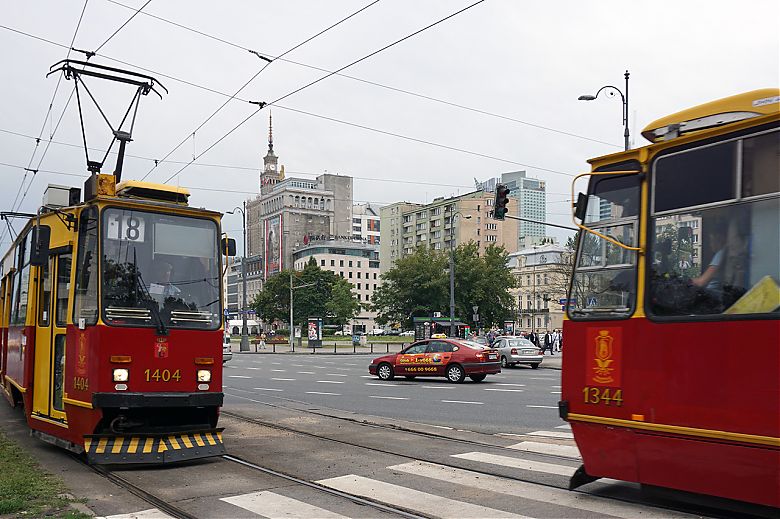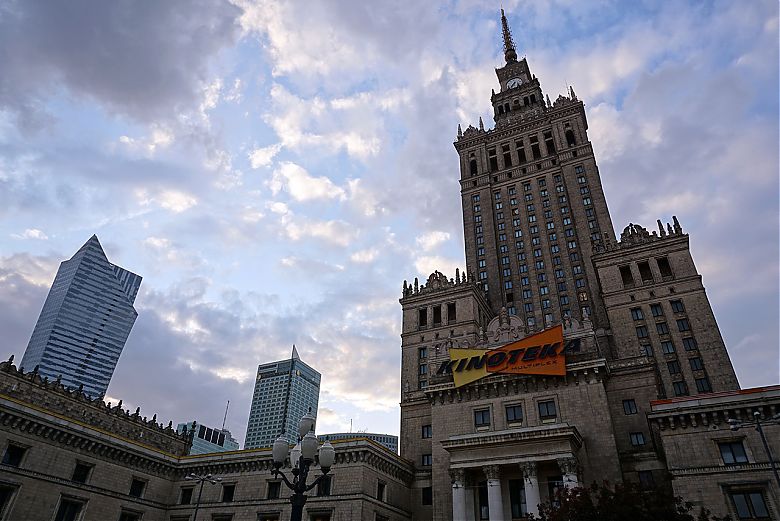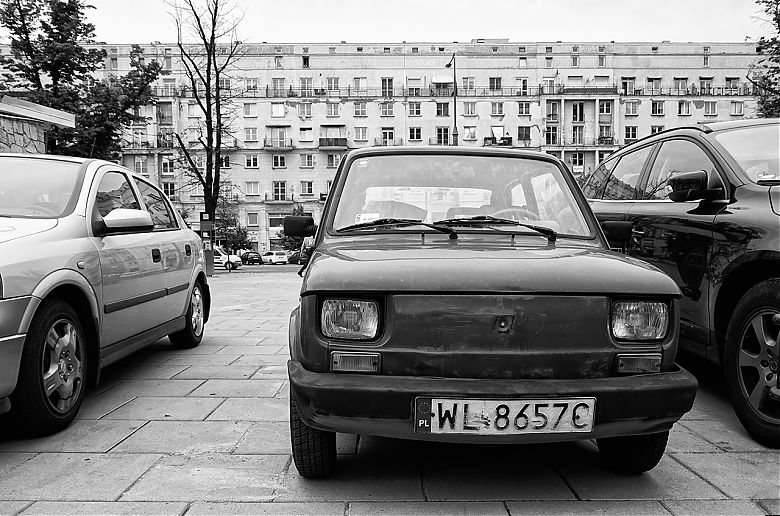2 days in Warsaw: what to see in the capital of Poland?

To be honest, some time ago never, ever would have imagined visit a city like Warsaw!
in fact, Poland and its capital, relatively little is known in terms of tourism.
The recent entry into the European Union is giving a I forte boost tourism (and not only) and, although Warsaw does not have to offer a cultural heritage such as Krakow, my visit has been a’interesting experience.
Did you know that Warsaw is the city where he was born Frederik Chopin? You also, come me, you thought it was French? Here, nothing more wrong. 🙂
Not only in this city has grown and is formed, but the city airport bears his name, and in the center there is an interesting museum (Fryderyk Chopin Museum), allowing you to go over the whole life of the famous musician. Time has flown and, without even visit it thoroughly, I spent about the museum 3 hours!
The city was, Unfortunately, made literally to pieces by the Nazis, so many attractions were reconstructed faithfully, or at least heavily restored.
Both the Royal Castle, both the market square (Market Old Town), two of the main tourist attractions, have in fact been reconstructed in recent decades.
come “reward” for the devastation at the hands of Nazi Germany, the Soviet Union of Stalin decided to make a “tribute” to Country, building what is the true symbol of the latest Warsaw: the Palace of Culture and Science (Palace of Culture and Science).
Needless to say, the Poles hate, because it reminds him of a dark period, Following a period even darker.
Present Day, in fact, Warsaw and Poland turn their backs on war, all’influenza sovietica, and in the capital sprout modern skyscrapers, almost like a small American downtown. Banks, consulting company, IT industry… all find space, in this new frontier of capitalism.
I must say that walking between these skyscrapers does something: while knowing well all North American cities (sluice Los Angeles), I did not expect to find a similar landscape when, two steps, can still be found Socialist-era tower blocks, in whose parking are Trabant or old Fiat 500.
In short, Warsaw seemed a city full of contrasts, where the wounds of the Nazi occupation before, and that (de facto) then Soviet, are still open, and witness the numerous memorials where one can encounter walking in city.
and, about contrasts, right outside PKiP, I caught this little man dancing, obviously very polished, that bothered some girls:
A couple of days is enough to visit the most famous sights in Warsaw, and you can safely move using the public transport, or bike sharing.
Like all cities in Eastern Europe, in fact, the transport network, the tram in first, is formidable, and the Metro is being expanded, with the opening of a second line.
I loaded the best photo, Usual, in my gallery, A this address.
We come now to’route that I followed, both in textual format that Google Maps:
1 day – arrival in the afternoon – (pins verdi)
- Monument of Nicolaus Copernicus (Nicolaus Copernicus Monument) (In front of the Palace Statszic, the building of the Academy of Sciences on Krakowskie Przedmieście, is a statue by the Danish Bert Thorvaldsen, dating back to the 1830. The Polish scientist holding a compass and an armillary sphere. During the Nazi occupation, the monument was being melted, but the troops had to retreat before succeeding)
- Church of the Holy Cross (Church of St.. Cross) (Across from the University of Warsaw, is one of the main baroque churches in Warsaw. It was built in the late '700 but, Unfortunately, was totally destroyed by the Nazis, that blew up. Was faithfully rebuilt after the war but, obviously, The frescoes are now lost. By the will of Frederic Chopin, after his death in Paris, his heart was deposited in an urn and deposited in the church)
- Presidential Palace (The Presidential Palace) (It is the reincarnation neo-classical, dating back to the 1818, a building that was on site since 1643. Up to 1818, was the private property of aristocratic families. During the Nazi occupation, was the headquarters of the Germans)
- Krakow suburb (Dating back to the 15th .sec, is one of the main city streets, is the northernmost part of the "royal road" that connected the Old Town to the Royal Castle, screen in Castle Square. Towards the South, flows into Nowy Swiat)
- Church of St. Anne (Church of St.. Anne in Warsaw) (Church adjacent to the Castle Square, Castle Square. It is one of the main Polish churches neoclassical, and one of the oldest buildings in the city, going to 1788. From 1454 AL 1788 was rebuilt again and again, until it assumed its present appearance. The only part to be rebuilt in modern times is the roof, destroyed by the Nazi raid. On the front are represented 4 Evangelists)
- Sigismund's Column (Sigismund's Column) (In the square of the Castle, in 1644, was erected a column dedicated to King Sigismund III Vasa, King of Poland and Lithuania in the late '500 and early' 600, in that 1596 moved the capital from Krakow to Warsaw. The column is high almost 10 meters, and on the top there is a statue of the king who keeps a sword and a cross. In totale, the column is high 22 meters)
- Royal Castle in Warsaw (It was the official residence of the monarchs, after moving the capital from Krakow to Warsaw, in the 16th century. Unfortunately, was devasato by the Nazis on several occasions, and was later rebuilt by 1971 AL 1980)
- Archcathedral Basilica of St. John the Baptist (It is one of the pantheon Polish, given the many illustrious compatriots who are buried there, as some Dukes of Masovia, or the last Polish king Stanisław August Poniatowski. Even going back to the late 14th century., for a change, was destroyed by the Nazis in 1944, and rebuilt according to ancient written records of the '600. It was the place where the Dukes of Masovia were crowned
- Piwna (road Beer) (The longest street in the old town, that starts from the castle and get to ul. Rynek. Dates back to 13-14 century. and his name is likely to have to do with the breweries that overlooked the street.
- Market square of the old town (Market Old Town) / Statue of the Mermaid (Siren Staromiejska) (The main square of the old town. After the Warsaw Uprising, was blown up by the Nazis, and later rebuilt. Dates from the late 13th century. and you met the merchants, just like in the central square of Krakow. The statue of the mermaid, called Syrenka, is the symbol of the city since '300, and dates back to 1855)
- Monument to the Warsaw insurgents (Krasinski Square) (The 1-August-1944, the population turned against the Germans, just as the Red Army was at the gates of the city, and fought valiantly for 63 days. The Nazis bombed indiscriminately buildings containing civilians. The Soviets did not want the army calndestino Polish, Home Army, pro-Western, take control, and then the history of the Warsaw Uprising was silenced until the fall of the communist regime. In the summer of 1989, was presented this monument, showing that the insurgents ermergono rubble) (Da which, Il bus 503 back to center)
- Monument for the Fallen and Murdered in the East (Monument to the Fallen and Murdered in the East) (Monument 1995, commemorating the victims of the Soviet invasion of Eastern Poland, simultaneously with the Nazi west. Represents a series of different religious symbols on a railway wagon, to symbolize the deportations suffered by Polish Eastern, often to the gulag of Siberia. This controversial topic was silent during the communist Polish) (Da which, Il bus 503 back to center)
2 day (pins rossi)
- Tomb of the Unknown Soldier (Grob Unknown Soldier) (Dedicated to all the soldiers who gave their lives for Poland, was erected after World War I in Plac Piłsudski. E'costantemente lit by an eternal flame. Here are held military ceremonies, and here the foreign heads of state come to pay homage)
- Saxon Garden (Giardini Saxon) (Park of 15ha, is the public perco city's oldest and dates back to 1727)
- Vain (the old Jewish ghetto street) (It is now the only remaining way of the old ghetto, and still has some era buildings)
- Fryderyk Chopin Museum (Hours 11 am-8pm. Cost 22PLN 13PLN or students) (Compra 1-day ticket Zone 1, from the cost of 15PLN and that lasts 24 hours from validation. Yeah site. Prozna walking to the north up to the parallel Krowelska. Da which, bus 105 da KROWELSKA57 a NEW WORLD 53, intersection with Świętokrzyska)
- The New World (One of the main streets, which is part of the "royal road", ranging from the old town to the south. Until the 17th century., before the city is ingrandisse, was a simple road leading to the villages to the south of Warsaw. At the time of Napoleon, the importance of the road grew considerably, and began to overlook at numerous neoclassic buildings. During the uprising against the Nazis, the road was almost completely destroyed, only to be restored as in the days of the 19th century.)
- Former headquarters of the Polish Communist Party – Banking Center – Financial New World SA (What is now a bank, in the rotunda Charles de Gaulle, was the headquarters of the Communist Party of the Polish People's Republic. It was built on the ruins of an old-style building socialist, behest of the Soviets. For decades, access to the building of the party by citizens, was prohibited.)
- Parliament Building (Diet) – Rural 4
- Bathrooms Park (Royal Baths) (With 76ha, is the largest city park, and was built in the '600 for a local nobleman. Luckily, was relatively little damaged, during the Second World War.)
- Palace on the Water (Palace on the Water) (Baroque building marble, was built in the late '600 and then be reshaped the late' 700 for the new King Stanislaw Poniatowski. It is located on an artificial island. It was built as a bathhouse for the then owner of the park, Stanislaw Lubomirski)
- White House (Little White House) (Villa built in 1774-76 Italian Domenico Merlini for the lover of the King. It was devastated by the Nazis, for a change.)
- Monumento a Chopin (Chopin Monument) (It was designed in 1907 da Waclaw Szymanowski, on the occasion of the centenary of the birth of Chopin 1910. After numerous delays, was built in 1926. It was blown up by the Nazis but, thanks to the original cast, in the 50s it was created a replica.)
- Belvedere Palace (It is the designated residence for official ceremonies, as well as the residence of the heads of state visit to Poland.)
- Constitution Square (Constitution Square) (One of the major examples of socialist Warsaw. Was commissioned to celebrate the signing of the constitution of the Stalinist 1952. Here parades ended May 1) (Exit the park and, from nearby Plac Unii Lubelskiej take any tram that goes to North, scendendo and Constitution Square)
- Warsaw Uprising Museum (TUESDAY 'E' CLOSED!!) (Da Constitution Square 04 Take the bus 159 up to SIEDMIOGRODZKA 52)
- Gold 60 – Fragment of the wall of the Jewish ghetto (Da Constitution Square 02 take a bus between 522, 501 and 131 fino a DW.CENTRALNY 02 and then walking to right on Aleja Jana Pawla II)
- Sienna 55 – Fragment of the wall of the Jewish ghetto
- Palace of Culture and Science (Palace of Culture and Science) (Time 9-20. Cost 18PLN 12PLN or students. with 237 meter antenna included, is the tallest building in Poland. It was a "gift" Union Soveitica, and was completed in 1955 thanks to 3500 Soviet workers, as a mixture of Polish art, Socialist realism, and American art deco. in fact, you notice a vague resemblance to the Empire State Building. in 1967, hosted the Rolling Stones concert, the first in a western band beyond the Iron Curtain. Many Poles do not see the buon'occhio, as it is a symbol of the long Communist regime. Here were held congresses of the Communist Party. Spreader is go up to the 30th floor, and enjoy a view of the city, cost of 5eur, or 2EUR for students)
- IF STILL TIME – Monument to Soviet soldiers (Monument to Soviet Soldiers) (Place in Skaryszewski Park, This monument was dedicated to Soviet soldiers died in the battle of September 1944 fought a short distance – National Stadium (National Stadium) (Hosted the inauguration of Euro2012, and will host the final of the Europa League 2015) (Take bus 158 the 507 da CENTRE 05 and RONDO WASHINGTON 02))
ITINERARIO IN FORMATO GOOGLE MAPS: link
The third day, in the morning, a short walk from Central Station, while I was going to take the train to the airport, I noticed the Polish Aviation Museum, which at that time was still closed. We could see the MiG, and other antique dating from the post-war period… for an aviation enthusiast like me, a paradise!
Too bad he did not have time… Who knows, maybe it will be an opportunity to return to Warsaw? 🙂


